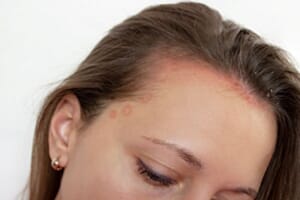The pH (power of hydrogen) factor is a term most of us have heard but which few understand the significance of in relation to skin care.
29 September, 2008 – 15:49
The pH balance of skin is calculated on a scale of one to 14 and the pH refers to the levels of acid or alkaline in any substance. In normal substances, anything below seven is acidic, above is alkaline, and seven is neutral. However, skin has a different pH. The pH of normal skin ranges from 4 to 6.5, which is slightly acidic and one of the major contributors to dry skin using skin care products which are either too acidic or too alkaline.
Alkaline stronger than pH 8 is very irritating to the skin and, unfortunately, the majority of skin care treatment products and household cleansers are far too alkaline. Most skin care soaps have a pH factor of 9 to 11 and many household cleansers range between 10 and 12. Oven cleaners come in around pH 13, which is why using rubber gloves is recommended. Some skin care treatment products are also too acidic. These products generally fall under the heading of peels and blemish or acne treatments and contain high concentrations of glycolic acid, lactic acid, salicylic acid and so on.
The acidic environment of the skin is referred to as the skin's "acid mantle". It contains a number of different acids including lactic acid, amino acids and free fatty acids. One of the major functions of the acid mantle is to protect the skin and body from the absorption of bacteria. As bacteria cannot survive in an acidic environment, maintaining the correct level of acidity is vital. If the acid mantle is disrupted, such as when the surface of the skin is broken through something like eczema or psoriasis or rosacea and acne, the skin becomes more susceptible to damage, dryness and infection. Although acid and alkaline are on opposite ends of the spectrum, either disrupts the pH and either can cause dry skin. When the acid mantle is disrupted by using skin care treatment that is too acid or alkaline, it takes about 14 hours for the skin to get back to normal. However, by that time we've usually used the products again so, in fact, the damage never really gets repaired. The result is permanent dry skin.
But it is possible to address and reverse the damage done by dry skin and it mostly starts with re-assessing your skincare products and reading what is in them very carefully. Often a label will state the pH or describe the product as "pH balanced" which is supposed to denote a pH that approximates that of the skin. But when you are tackling very dry or sensitive skin, an approximation is not enough. It is important to know the exact pH of the product and it needs to be exactly or as close as possible to neutral pH, which means between 5-7 pH. Any product that does not state its exact pH should not be used on very dry or sensitive skin.







